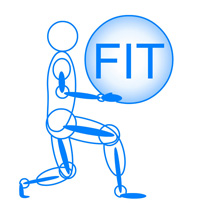A Major Workplace Safety Issues:
Media Workers at Risk for Repetitive Strain Injuries
Situation:
The newsroom of San Jose Mercury News, like any daily newspaper, is crammed with reporters at their computers with arms raised and fingers flying as the deadline approaches. All this typing and clicking can cause damage to muscles, tendons and nerves and an alarming number of people who work at a computer all day are developing a painful condition called repetitive strain injury (RSI) also known as repetitive stress injury.
Solution:
San Jose Mercury News, a member of Knight Ridder, implemented a worker safety program delivered by Future Industrial Technologies (FIT) where skilled health care practitioners and ergonomists provide workplace safety training.
Results:
The 3 indices that the Mercury News track are number of injuries, cost of the injuries and the number of lost-time days. From 2000-2003 they decreased the number of injuries and costs by 41% each and decreased lost-time days by 67%.
Since 1981, the incidence of RSI has become the largest category of reported worker illness and injury. According to the U.S. Bureau of Labor Statistics, repetitive stress injuries result in the longest absences from work (17 days) of any frequent type of work-related injury and cost the country billions of dollars in health care and lost productivity.
In 2000 the San Jose Mercury News, a communications company primarily engaged in newspaper and Internet publishing, realized that they needed an updated workplace safety program in order to reduce injuries and costs.
“We knew we needed to update the workplace safety and ergonomics programs we were offering,” says Robyn Demchak, Environmental, Health, Safety & Security Manager at the newspaper. “We had RSIs in our production areas as well as our office areas. We needed to make these jobs safer and decrease the injuries.”
“I relate these improvements to the implementation of a few new safety programs and the full support of our management team,” says Demchak. “The largest difference in driving these numbers has been our annual ergonomics program given by Future Industrial Technologies (FIT) which we implemented in 2000.”
The Mercury News uses both the FIT BACKSAFE® and the SITTINGSAFE® training, as they have workers who are involved in heavy lifting as well as reporters, advertising sales and finance people who work on computers every day and are at risk for RSI.
“One of the main benefits of the program was that employees became more aware of how certain movements and actions affect their bodies,” says Demchak. “They felt that we cared enough about them to bring them a professional program that teaches them how to keep their bodies healthy with the types of tasks they have to do, day in and day out.”
This benefit showed up right away in a change in attitude – employees were more positive and better educated on the correct way to do things. Employees thanked Demchak for implementing this program, which is a good testament to FIT.
“Our average cost per claim has stayed constant for the last five years,” says Demchak. “Since medical costs and temporary total disability (TTD) rates have been rising at astronomical speeds, we consider it a success that we have reduced our incidence of repetitive strain injuries and kept our cost per claim constant over this period.”


